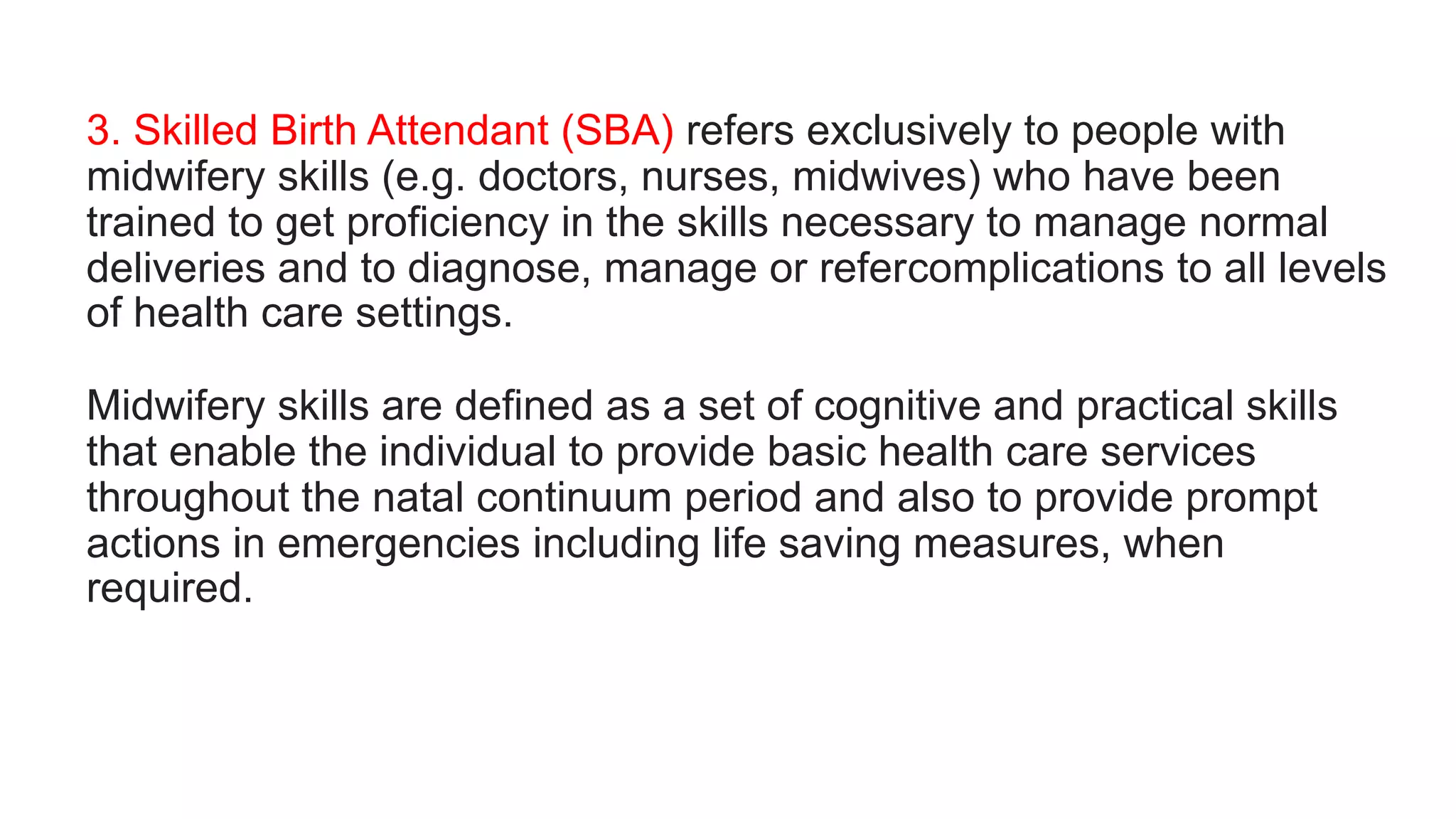This document provides an overview of midwifery and obstetrics in India. It discusses the history and development of midwifery in India from ancient times through independence and into the present. Key topics covered include the roles of dais and midwives, the establishment of midwifery training programs, changing perspectives and approaches over time, contemporary midwifery roles and cadres, and statistics on maternal and infant mortality rates.










































